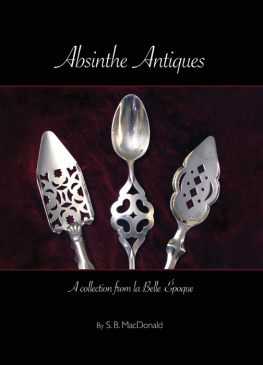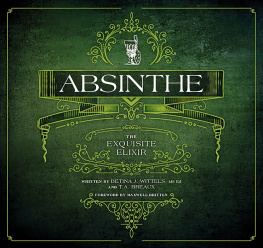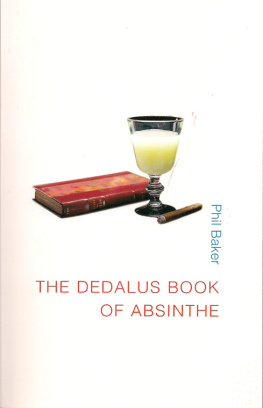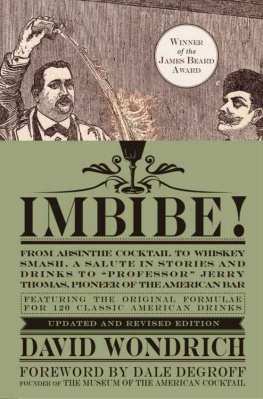All rights reserved. No part of this book shall be reproduced or transmitted in any form or by any means, electronic, mechanical, magnetic, photographic including photocopying, recording or by any information storage and retrieval system, without prior written permission of the publisher. No patent liability is assumed with respect to the use of the information contained herein. Although every precaution has been taken in the preparation of this book, the publisher and author assume no responsibility for errors or omissions. Neither is any liability assumed for damages resulting from the use of the information contained herein.
Absinthe Antiques; A collection from la Belle poque
Text and photographs copyright 2011 by Scott B. MacDonald
Library of Congress Control Number: 2010915172
ISBN10: 0-7414-6375-X
ISBN13: 978-0-7414-6375-3
Printed in the United States of America
Published February 2011

INFINITY PUBLISHING
1094 New DeHaven Street, Suite 100
West Conshohocken, PA 19428-2713
Toll-free (877) BUY BOOK
Local Phone (610) 941-9999
Fax (610) 941-9959
www.buybooksontheweb.com
Table of Contents
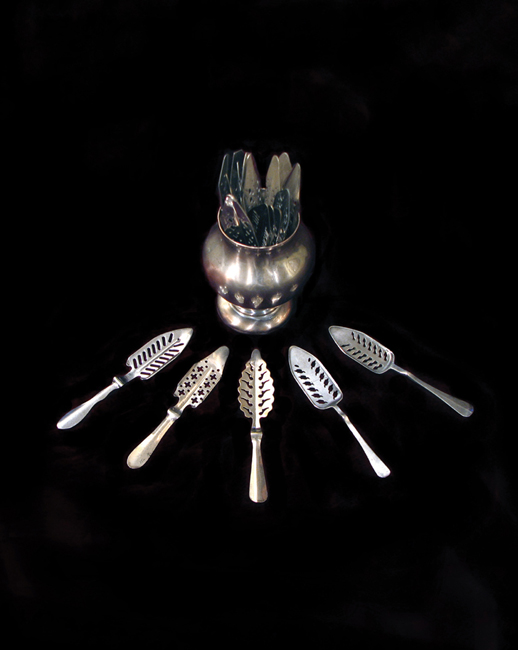
Introduction
The absinthe ritual is one of charm and elegance, and when used in service and shared with friends, these antiques from Frances la Belle poque (the beautiful era) make the experience even more wonderful.
This book celebrates the absinthe antiques I have collected, which date from the late 1800s to the early 1900s. As of yet, Ive not seen a book featuring large, detailed photographs of absinthe antiques, and out of respect for the absinthe community, I thought it was a worthy project. Ive always loved antiques in general, and enjoy quality absinthe; this book grew naturally out of that combination.
The following pages feature an array of antiques that were commonly employed in the serving and preparing of absinthe in its heyday, and include brief descriptions of their use. For this reason, this book also serves as a way of demonstrating absinthes basics. Also included, are various absinthe-related items. You may notice that some pieces show signs of use, while others look nearly new. I feel it is simply not right to modify antiques; the items in this book are presented in their true condition, receiving only a cleaning and polishing if needed.
My goal is to share the beauty of these pieces, and encourage others to obtain their own absinthe antiques for the fun and romance of it. It truly does make a difference when preparing absinthe with antique gear! Ive had a wonderful time hunting down the pieces in this modest collection, and feel they deserve to be seen and given a second life. Many of these antiques are used regularly.
Though touched upon in places, Ive opted not to cover the bulk of absinthes history; several fine books on this subject have been written by authors more knowledgeable than myself, and are available to readers should they wish to pursue this. I am grateful for the guidance, friendship and advice of several absinthe experts and collectors during the creation of this book. Please enjoy the photos Ive taken of these survivors of time! Perhaps together, we can bring this era back to life, at least for a moment, through these beautiful antiques.
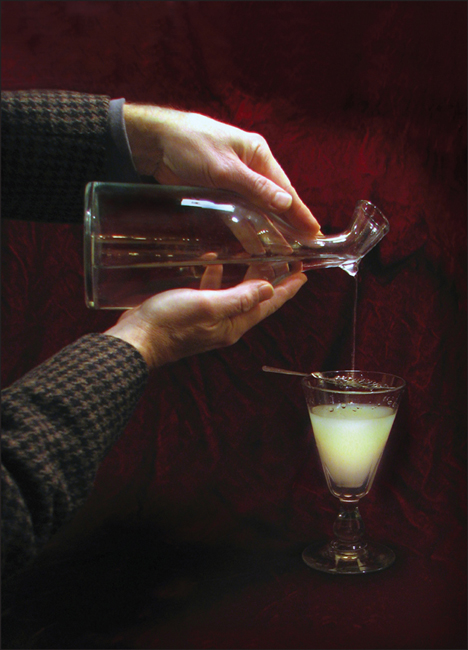
The Absinthe Ritual
Ive yet to meet a first-timer who is not captivated by the experience of seeing absinthe prepared correctly. It can be described as ceremonial, elegant and romantic, yet this is also a drink for friends to share in social gatherings. The pieces involved are intricate and beautiful, and the details of absinthes preparation are unique in the world of spirits.
Absinthe is poured into a glass in a measure referred to as a dose. This is due to absinthes origins as a medicinal tonic. In my antique glasses and topettes, the chamber or line used to mark the dose ranges anywhere from 15-30 ml. Many modern drinkers simply use one shot as their measure. Water is then added in various ratios, depending on preference, to dilute the absinthe. Common ratios range from three to five parts water, to one part absinthe.
Sugar, if desired, is added through the use of a spoon specifically designed for absinthe glasses. Absinthe spoons are often ornate, with much thought and care going into their creation. Highly creative and artful spoons are once again being produced. The spoon is placed on top of a glass, then a cube of sugar is placed upon the spoon. Ice water is then poured from a carafe in a thin stream, or in drips, over the sugar. As the sugar cube dissolves, sweetened water drips through the spoon into the absinthe below. A cloud-like reaction called a louche begins to form. As the desired water to absinthe ratio is reached, the louche will typically be light greens, yellows, whites, coppers, and even blues. While forming, the louche often presents an enjoyable display of smoke-like effects and rolling fog. The final result should be opalescent, slightly translucent, and attractive.
Absinthe fountains are also used to dispense water; these devices possess multiple spigots called robinettes, from which several people can add water to their absinthe simultaneously. Today, reproduction fountains are available from many vendors and are quite affordable. During a social gathering, fountains add elegance, and become a communal focal point.
Under no circumstances should one ever light absinthe-soaked sugar on fire. This so called Bohemian ritual is a myth manufactured by unscrupulous distillers. This dangerous technique was created to entice people into drinking low quality and often imitation absinthe. Sadly, uninformed bartenders and drinkers perpetuate this myth. Simply put, flames have nothing to do with the serving of real absinthe, and never did.
Please find a way to share the correct, traditional ritual with friends! It is something you will certainly enjoy and remember.
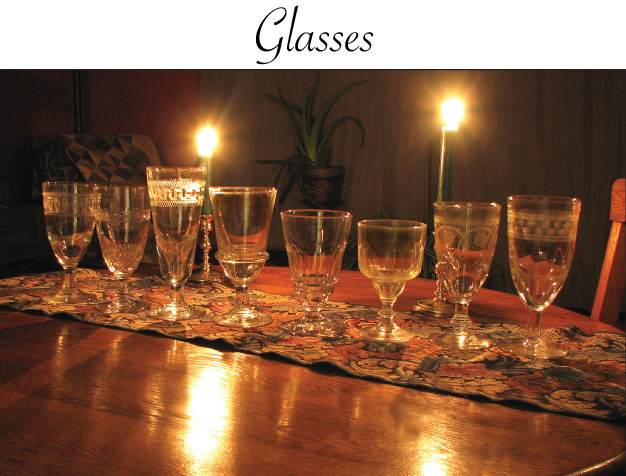
An antique absinthe glass is like a time machine in your hand, enhancing fine absinthe in a way one needs to experience to understand. Ranging from dedicated absinthe glasses to multiple-use bistro glasses, the art and design of these pieces is remarkable. Each style has its own personality, feel in the hand, and contribution to the experience of drinking from it. There is something special about a glass with history.
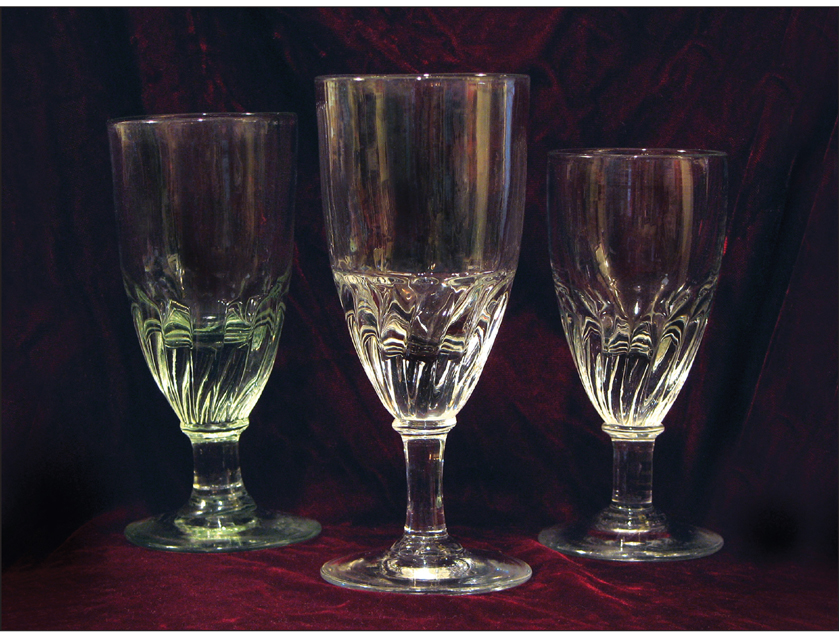
Torsad glasses (also known as swirl glasses), were commonly used in bistrots with absinthe and other drinks. This trio includes a small half-dose glass on the right, and on the left, a glass tinted a jewel-like shade of green. These were sturdy enough to hold up to public use, and many have survived the last century. The smaller half-size glasses are often referred to as

